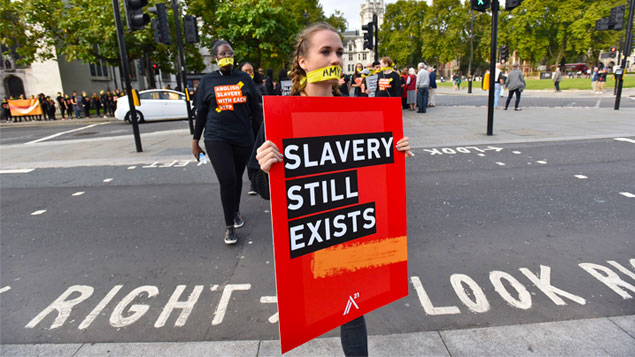Slavery is a real thing: Is it in your business?


There is a good chance that you may have heard about Australia’s new Modern Slavery legislation, the Modern Slavery Act 2018. But there is also a good chance that you have disregarded it as not being applicable to you.
Please don’t be so hasty. It might well apply to you. The test is not your supply chain. The test is your revenue.
If your business is in the big end of town—turning over $100 million per year—then you must complete a Modern Slavery Statement. It’s a much higher threshold than in the UK, which is the equivalent of $60 million.
The good news is that being compliant is relatively easy if you already have a clear picture of both your business plan and your supply chain. The bad news is that a motherhood statement isn’t going to cut it.
About the Modern Slavery Act
The Modern Slavery Act is very new. It requires you to develop and publish a statement in line with the criteria (they are in the Act, which you can find here). The Act does not establish an independent commissioner, and nor are penalties attached. What it does is enact a public register, on which reports will be compiled and made available.
The potential for penalties to be introduced at a federal level exists. It would be foolish of me to advise you, as a new CEO, to assume that you will be free from sanctions forever. My recommendation to you is to behave as though sanctions exist, because you will be safer in the long-run.
So what IS Modern Slavery?
This definition of Modern Slavery is taken from Rao’s Modern Slavery and Supply Chain Reporting, released in April 2019:
‘Modern slavery’ is an umbrella term. It captures a range of exploitative conduct – slavery, servitude, forced or compulsory labour, the worst forms of child labour and any form of human trafficking. While all this conduct falls under the same umbrella, inherent variations on the themes of ownership and coercion distinguish each form of exploitation.
Rao goes on to point out that each of these forms of exploitation are unique, and are defined differently in international law. Because this is the case, your company must be very clear about what exactly you are trying to avoid in your operations and in your supply chain.
While the term ‘slavery’ is used in its traditional sense (as someone owned by someone else), you must be careful about how you approach your assessment. The notion of ‘servitude’ is someone who is ‘not free to cease’ doing something, because of some kind of pressure or coercion from someone else.
Slavery? In Australia?
You might be surprised to learn that slavery is a real issue in Australia.
According to the Business & Human Rights Centre, there are ‘about 4,300 slaves in Australia’; though the Global Slavery Index of 2018 suggests that there are many more: Approximately 15,000 people trapped in slavery conditions in Australia, or 4.5 people in every 100.
At a glance, the Australian Modern Slavery Act 2018 appears simple to assess: Clearly it applies to you if you manufacture or purchase products, particularly from overseas, right? Well, it’s much more subtle than that.
The Act is a piece of your Human Resources compliance requirements. It covers, for example, ‘deceptive recruiting’. This applies to situations where people ‘are induced to enter into working arrangements for labour or services’, but have been deceived about the true nature of the employment.
Choice magazine gives numerous examples of situations that fall under the Modern Slavery Act: Prawns imported from Thailand; electronics imported from Malaysia; and other forms of exploitation in Australia’s agriculture, sex, and seafood processing industries. These are the country’s highest-risk industries. You can read more about those here.
Modern Slavery takes many forms, and some of them might exist right under your nose.
How to comply with the Modern Slavery Act 2018
To comply with the Modern Slavery Act 2018, you must meet reporting requirements. It involves submitting an annual report, called a Modern Slavery Statement. That statement describes what you have done to address the risks of modern slavery in your operations and your supply chain in the past year.
To complete the statement (full criteria are in Part 2, Section 16 of the Act), you must:
- Double-check whether or not you are obliged to comply. Even if you are not obliged to comply, you can volunteer to do so. You are obliged to comply if your consolidated revenue is at or above $100 million.
- Have a clear picture of the structure of your operations and your supply chain.
- Conduct a complete risk assessment of both your operations and your supply chain, so that you understand where you might be at risk.
- Be able to describe the actions that your business has taken to assess and address those risks.
While the Modern Slavery Act 2018 appears relatively simple, issues may arise when you start digging into your operations and your supply chain. For example, your labour supply chain may be unclear if you use services like Upwork, or employ virtual assistants in other countries.
If you do nothing else today, one thing you can do right now is ask to see the latest Modern Slavery risk assessment. If your team can’t give you one, you will know immediately that your company might not comply.
Phew – this doesn’t apply to me
If your business doesn’t reach the consolidated revenue thresholds, this isn’t a reason to sigh with relief and ignore the legislative requirements. Modern slavery and supply chain integrity are topics of increasing scrutiny by consumers and are a hot topic in the media. You don’t want your business to be the leading news headline for unwittingly having supply chain issues. There is a moral and social obligation to have an understanding of your risk and to be doing everything in your power to ensure integrity in your business operations.
TL;DR
The Modern Slavery Act 2018 is in operation in Australia and as a matter of business ethics and competitive advantage, you need to understand your obligations in order to comply with the legislation, but also to withstand scrutiny from consumers and media.
By Susan Sadler
About the Author
Susan Sadler is the Director of Red Wagon Workplace Solutions, a Commercial Human Resources firm that specialises in supporting balanced, outcomes-driven transformation. Susan has strong commercial acumen, a deep legal knowledge, and experience delivering at both strategic and operational levels of HR. The combination of Susan’s technical and legal knowledge, with her background in psychology and behavioural science, enables her to deliver optimal solutions. As an objective and forthright practitioner, Susan has seen the incredible impact of embedding commercial HR practice within an ethical, values-based framework. Time and again, her clients find themselves with improved cohesion, increased efficiency, cost reductions, and gains in productivity.







